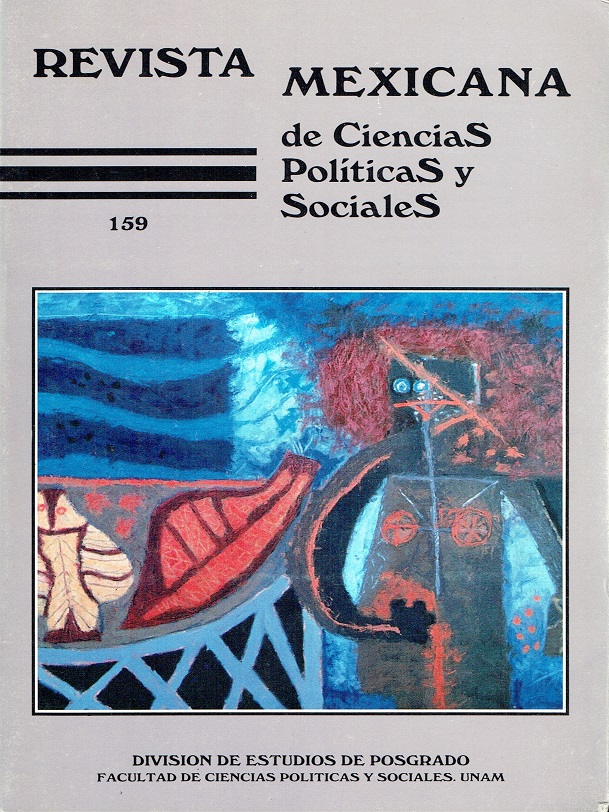El Partido Liberal-Democrático en Japón: la dominación conservadora
Main Article Content
Abstract
Downloads
Article Details
Citas en Dimensions Service
References
Blaker, Michael (1979), “The Conservatives in Crisis”, en Passin, Herbert (Ed.), A Season of Voting; The Japanese Elections of 1976 and 1977Washington, American Enterprise Institute for Public Policy Research, pp. 13-42.
Collick, Martin (1988), “Social Policy: Pressures and Responses”, en Dynamic and Inmovilist Politics in Japan, London, MacMillan Press, pp. 205-236.
Curtis, Gerarld (1971), Election Campaigning Japanese Style, New York, Columbia University Press.
George, Aurelia (1988), “Japanese Interest Group Behavior: An Institutional Approach”, en Stockwin J. A., Dinamic and lnmobilist Politics in Japan, Oxford, MacMillan Press, pp. 106-140.
Hrebrenar, Ronald (1992), “The Money Base of Japanese Politics”, en Hrebrenar, Ronald (Ed.), The Japanese Party System, San Francisco, Westview Press, p. 54-78.
Krauss, Ellis (1989), “Politics and the Policymaking Process”, en Ishida T. y Krauss (Eds.), Democracy in Japan, Pittsburgh, University of Pittsburgh Press, pp. 39-64.
Matsuyama, Yukio (1989), Japanese Politics in Transition, New York, Columbia University, East Asian Institute, Institute Reports.
Muramutsu, Michio, y Krauss, Ellis (1991), “El partido dominante y las coaliciones sociales en Japón”, en Pempel (Coord.), Democracias diferentes; los regímenes con un partido dominante, México, Fondo de Cultura Económica, pp. 323-348.
Pempel, T.J. (1982), Policy and Politics in Creative Conservatism, Philadelphia, Temple University Press.
Pempel, T.J. y Tsunekawa, Keiichi (1979), “Japan: Corporatism without Labor? The Japanese Anomaly”, en Schimitter, P. y Lehmbrusch, G. (Eds.), Trends Toward Corporatist Intermediation, London, Sage, pp. 231-270.
Pempel T.J. (Coord.) (1991), Democracias diferentes; los regímenes con un partido dominante, México, Fondo de Cultura Económica.
Richardson, Bradley y Flanagan, Scott (1984), Politics Japan, United States, Harper Collins Publishers.
Sartori Giovanni (1980), Partidos y sistemas de partidos, Madrid, Alianza Universidad.
Stockwin, J.A. (1988), “Parties, Politicians and the Political System”, en J.A. Stockwin (et al'), Dynamic and Inmovilist Politics in Japan, London, MacMillan Press, pp. 22-53.
Thayer, Nathaniel (1969), How the Conservatives Rule Japan, New Jersey, Princeton University Press.
Tomita, N. Nakamura, A. y Hrebenar, J. (1992), “The Liberal Democratic Party: The Ruling Party of Japan”, en Hrebenar, Ronald (Ed.), The Japanese Party System, San Francisco, Westview Press, pp. 237-284.
Van Wolferen, Karel (1989) The Enigma of Japanese Power, New York, Random House.

La Revista Mexicana de Ciencias Políticas y Sociales publicada por la Universidad Nacional Autónoma de México se distribuye bajo una Licencia Creative Commons Atribución-NoComercial-SinDerivar 4.0 Internacional.
Basada en una obra en http://www.revistas.unam.mx/index.php/rmcpys/
La RMCPyS autoriza a sus colaboradores que suban una copia de sus trabajos publicados en sus webs personales o en cualquier repositorio de acceso abierto, siempre y cuando se mencione específicamente a la Revista Mexicana de Ciencias Políticas y Sociales como fuente original de procedencia, citando el año y número del ejemplar respectivo y añadiendo el enlace a la página web donde este órgano editorial puede ser consultado in toto, de manera abierta y gratuita en: <www.revistas.unam.mx/index.php/rmcpys>.
Las y los lectores tienen libertad para:
Compartir, copiar y redistribuir el material en cualquier medio o formato.
El licenciante no puede revocar estas libertades en tanto usted siga los términos de la licencia.
De acuerdo con los siguientes términos:
- Atribución: la/el lector/a debe reconocer el crédito de una obra de manera adecuada, proporcionar un enlace a la licencia, e indicar si se han realizado cambios. Puede hacerlo en cualquier forma razonable, pero no de forma tal que sugiera que tiene el apoyo del licenciante o lo recibe por el uso que hace.
- No comercial: la/el lector/a no puede hacer uso del material con fines comerciales.
- Si se mezcla, transforma o se desarrolla a partir de la obra licenciada, no se permite la distribución del material modificado.
Cargos por gestión de artículos
La Revista Mexicana de Ciencias Políticas y Sociales NO cobra tarifas por recibir, procesar o publicar los artículos (Article Processing Charge [APC]) enviados por los autores.

